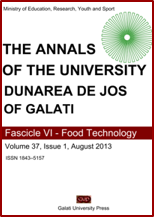Division of Animal Production, Department of Agriculture, Atomic Energy Commission, Damascus
Abstract
This study was carried out on female goats (Syrian Mountain: Jabali and crossbred: Damascus x Syrian Mountain) to determine daily milk production (morning, evening and total) and milk compositions (protein, fat, lactose and total solids). Thirty female goats from each breed, aged about two years were used in their first lactation season for a period of 165 days, starting 60 days after kidding. There were huge variations among individuals within the same breed in terms of milk production. Average daily milk production/doe was 929 and 958 g for Syrian Mountain and crossbred does, respectively, with no significant (P>0.05) differences between them. The highest daily milk production /doe was 1555 and 1800 g, and the lowest production was 280 and 240 g for Syrian Mountain and crossbred does, respectively. Results also indicated that there were no significant (P>0.05) differences in milk compositions between the two breeds, with overall averages (%) for protein content 3.42, and 3.42, fat 4.64 and 4.74, lactose 4.23 and 4.21, and total solids 13.00 and 13.04 for Syrian Mountain and crossbred does, respectively. However, significant (P<0.05) increases in the percentage of fat and total solids were recorded in the morning milking in the does of the two breeds. In crossbred does, lactose content was significantly higher (P<0.05) in the evening milking than the morning one, whereas, in Syrian Mountain does, protein content was significantly higher (P<0.05) in the morning milking as compared to the evening one. Comparing the milk production and composition obtained in the present study with those reported from other goat breeds, it could be noticed that the tested components were within the normal values with no difference between the two studied breeds.


